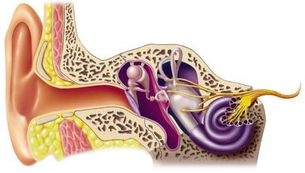Hearing loss? You’re not alone
The lowdown on hearing loss
If you’re experiencing hearing problems, you’re in good company – it’s estimated that around 10 million people in the UK have some level of hearing loss. That’s one sixth, or around 17%, of the population.
Other key facts include:
Around six million of the 10 million UK people with hearing loss are aged 65 or over.
There are several reasons why people develop hearing problems, but the ageing process is the most common factor.
Other key reasons are related to occupational or recreational activities – such as being repeatedly exposed to loud music, motorsport or industrial noise.
On average, it takes people seven to 10 years to do something about their hearing loss.
Don’t suffer in silence
At Key to Hearing, we understand it can be hard to admit you can’t hear as well as you used to. But it’s important to get help as soon as possible, so your hearing can be restored to the best possible level.
Our hearing check will identify your exact hearing range so we can discuss an appropriate solution to suit your needs, lifestyle and budget.
Spot the signs of hearing loss
To find out if your hearing has changed, try to answer the questions below:
Do you have difficulty hearing speech on the TV?
Have other people complained that the TV/music is turned up too loud?
Do you often have to ask people to repeat themselves?
Have family or friends commented on your hearing?
Do you struggle hearing conversation on the telephone?
Do you have difficulty hearing speech in noisy environments even though others seem to manage?
Do you rely on people’s lip movements and expressions to help read what you cannot hear?
Do you find it difficult hearing in the car?
If you answered ‘yes’ to any of the questions, we recommend you book a hearing evaluation with Key to Hearing.
Protect your hearing today
As mentioned above, some workplaces and recreational environments are so noisy that your hearing could become damaged in time. We believe prevention is better than cure, so hearing protection may help minimise hearing loss in these situations.
The causes of hearing change
Why do changes in our hearing occur
Hearing change can occur through many factors, but the most common form is related to ageing. This is known as ‘Presbyacusis’, which occurs from gradual wear and tear of the sensory hair cells in the inner ear.
We may not initially be aware of our hearing loss as it can slowly progress over many years. On average, a person waits approximately 7-10 years before they seek advice from a professional.
Hearing change may also be caused by other factors such as exposure to noise, ear infections, injury, illness, medications and genetics or in some cases, simply because the ears are occluded with wax.
Reduced hearing can be a communication barrier. You may find yourself having to ask people to repeat themselves, guessing words to compensate for those you did not hear clearly and feel people mumble when they speak. You may find it increasingly challenging to hear conversation well in a background noise situation and relatives and friends may complain that the TV or radio is too loud for them. If this is the case then Key to Hearing is here to offer advice and support.
How the hearing system works
The hearing system
The ear can be split into three sections:
The outer ear
The middle ear
The inner ear
Sound reaches our ear via sound waves. The shape of the outer ear helps to collect sound waves and funnels them down the ear canal towards the eardrum (Tympanic Membrane).
The sound waves cause the eardrum to vibrate, which in turn causes the three bones in the middle ear (the ossicles) to vibrate and amplify the sound waves through to the oval window of the inner ear.
The sensory hair cells that are along the length of the fluid filled cochlea are stimulated and electrical impulses are sent from the hair cells along the auditory nerve to the area of the brain where we interpret sound. Have you got a hearing loss?
Types of hearing loss
There are three types of hearing loss. Conductive, sensorineural or a mixed hearing loss (which is a combination of both).
Conductive hearing loss is caused by problems to the outer and middle ear (see diagrams A and B). With conductive hearing loss, the sound waves cannot travel through to the inner ear effectively and so sounds will appear quieter. Conductive hearing loss can be caused by earwax, fluid in the middle ear, a damaged eardrum, damage to the middle ear bones (the ossicles), genetic defects or infection. Most problems related to the outer and middle ear can be addressed by medication or surgery. If this is not possible, hearing loss may be treated successfully in most cases with a hearing aid.
Sensorineural hearing loss occurs when the tiny sensory hair cells along the membrane of the fluid filled cochlea become damaged (see diagram C). Sensorineural hearing loss may occur due to gradual wear and tear of the sensory hair cells through the ageing process. Other causes are exposure to loud noise, illness, medications, genetics and head trauma. With sensorineural hearing loss, sounds may appear quieter but also distorted. In most cases this is where hearing systems are advantageous in treating hearing loss.




